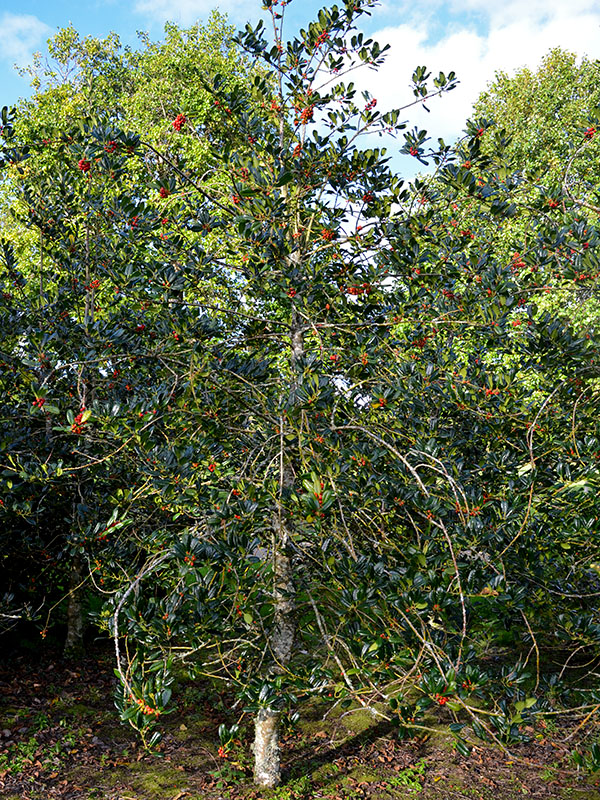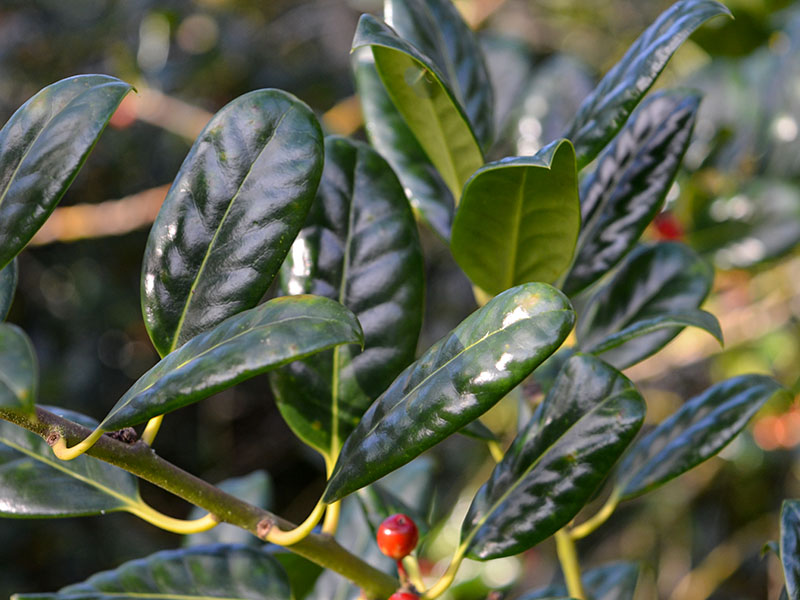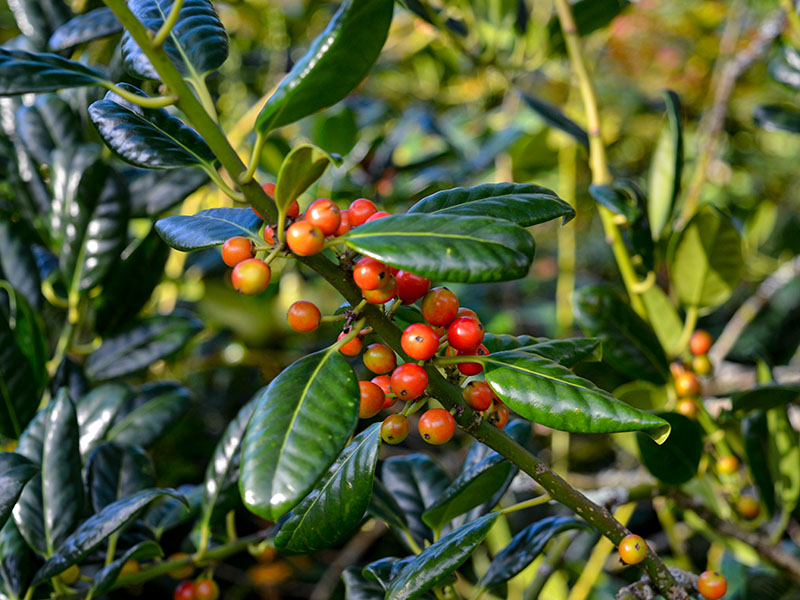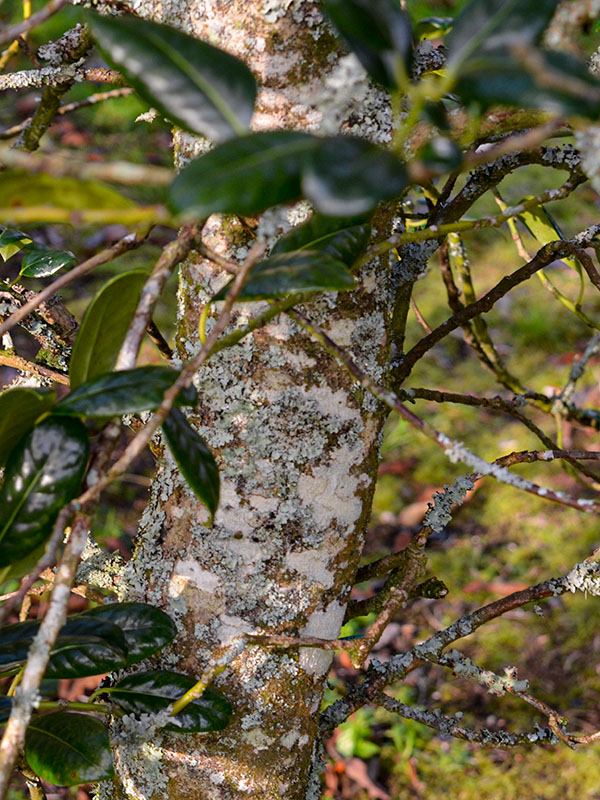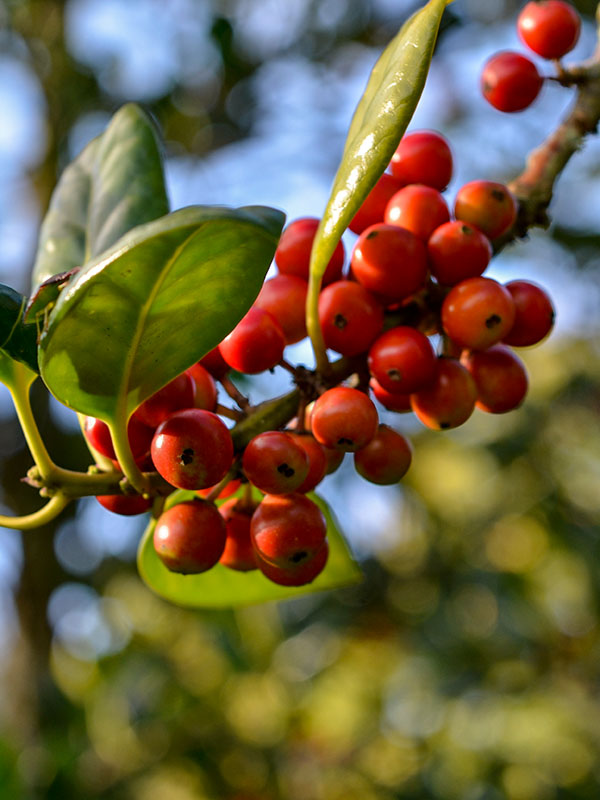
Woody > Ilex > Ilex aquifolium > Ilex aquifolium 'J.C. Van Tol'
Ilex aquifolium
'J.C. Van Tol'
J.C. Van Tol Holly
| Family |
| Aquifoliaceae |
| Genus |
| Ilex |
| Species |
| aquifolium |
| Cultivar |
| 'J.C. Van Tol' |
| Category |
| Woody |
| Type |
| Tree (evergreen) |
| USDA Hardiness Zone |
| 6 - 7 |
| Canadian Hardiness Zone |
| 6b |
| RHS Hardiness Zone |
| H6 |
| Temperature (°C) |
| (-10) - (-5) |
| Temperature (°F) |
| 14 - 23 |
| Height |
| 4 - 8 m |
| Spread |
| 2.5 - 4 m |
Photographs
Description and Growing Information
Flowering Period
| General Description |
| The bark of the tree is grey, the leaves are dark green, lighter underneath and have spines in less mature trees. The flowers on female plants are white and on the male plants are yellow with fruit, a red drupe appearing in autumn. |
| Landscape |
| Ilex aquifolium is an excellent species to plant in wildlife gardens. It produces an excellent hedge and grows well in shady sites. It has been cultivated as an ornamental tree due to its fruit and is used for Christmas decorations. Ilex aquifolium has spiky leaves, white flowers in the summer and red berries in the autumn lasting into the winter months. It offers interest throughout the year for any landscape design and it can be used as part of a festive Christmas landscape. |
| Cultivation |
| The European Holly grows well in all soils types whether clay or alkaline. They are tolerant of shade, heat, drought and pollution. If sandy soil is present mulching is recommended with pine needles or oak leaves. |
| Shape |
| Bushy. |
| Growth |
| Slow |
| Notable Specimens |
| Lanhydrock Gardens, Cornwall, England. |
| Propagation |
| There are many forms of propagation for Ilex aquifolium from hardwood cutting in the autumn or midwinter to semi-ripe cuttings in the late summer into autumn. The use of cuttings is the primary form of propagation. Seeds can be used in the early spring. Layering and grafting can be utilized from spring to early autumn. When hardwood cuttings are taken in the winter, the media for the cuttings should be heated at a soil temperature of 18° C. If using seeds, the seeds should be stratified at 4° C, for 4-5 months. The collection of the berries should be performed over the winter, the flesh must be removed and the seed must be sown immediately. The seeds may also be stored in a moist, warm place where the embryos may mature. The seeds should then be placed in moist soil and moved to a refrigerator, after dormancy, they may be sown outdoors. |
